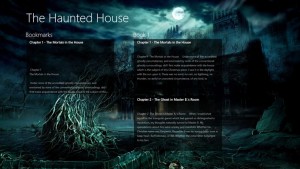Read more about this App here : Microsoft Apps
It has been a career-defining week so until the dust truly settles I not making any comments about my withdrawal from the Creative Writing M.A. other than these reflections on what I think is happening to fiction these days in general.
It was only after withdrawal that I started to consider what it was that I had wanted from the course rather than what the course offered me. There was no problem with what delivered it simply wasn’t what I wanted..they sold bananas I actually wanted peaches.
The problem is that the field of ‘Extended Fiction’ which I am primarily interested in is at present almost homeless within academia in general. The NTU course is not the only one focusing on the principles of traditional fiction writing, screen-writing and poetry in categories that have been fixed since the notion of Creative Writing was accepted into the academy. Indeed one could even go back further to the battles to get English Literature accepted into the academy.
This constant seeking for ‘validation’ alongside the sciences means that, like fine art, a lot of conservatism has crept in alongside the wish to be taken seriously. This conservatism is especially prevalent now with REF status measurement . Creative courses move towards ‘acceptability’ through research worthiness but in my opinion it is stifling creative content and not just in writing.
The area of apps and fiction (see above) which mixing illustration and stories, online and offline graphic novels, voice-only novels ( a recent development..basically a recording of writer reading but no text sold) photo-embedded literature, visual-poetry, comics etc etc has hardly rippled the surface of ‘creative writing’ that country-wide has been modeled on a Stateside Iowa Workshop model first introduced in the 1960’s. A model that now 50 years old. We wouldn’t drive a car built in 1960 now so why drive a model of education that similarly dated?
There are various reasons for this. A lot of the embedded wisdom in that model is very good. Good writing is good writing and basic principles have not changed. What has changed is everything around that model. The stand-alone paper novel may not be as Will Self so clearly put it ‘as dead as the Dodo’ but it is it certainly one platform amongst many now. Self is one author trying to breathe life into its  form in an arena where what we call literature or ‘the book’ may be fragmenting into a variety of platforms. The internet has changed the delivery, consumption and influence of the literature we read as comprehensively as the first paperbacks sold at W.H.Smiths (which trains then distributed around the country like a steel internet) changed our notions of literacy, communication and most importantly fueled universal suffrage and democracy.
To paraphrase Yeats
Things fall apart; the centre cannot hold……
But the centre here is the reader. The reader is now the centre of endless opportunities be it social media, hypertext, embedded photos. Everything has become an endless ‘narrative’ which we making from our own lives via social media. To disrupt this ‘FLOW’ of trans-mediale imagery and text we have to purposefully disengage via Kindle or paper (the original kindle is a electronic metaphor for paper anyway) and place ourselves outside the ‘FLOW’.
If one turns one’s attention away from standard literature field to what I tentatively calling ‘Extended Fictions’ a whole new landscape emerges. This is a landscape that the millennial born digital natives are swimming in effortlessly. It is both image and text like graphic novels but maybe even more fluid and permeable once online. The graphic novel has its ‘paper’ retro adherents who regard online as a threat to its unique paper object-ness.  They see its object-hood as the defining characteristic of  paper-bound writing and in many ways this ‘thing-ness’ corresponds with contemporary crisis in the fine arts over authenticity and object value.
I spent much of last year investigating Charles Dickens and his illustrators as a key moment in the development of the ‘serialised’ novel. Indeed one could say he invented the modern magazine serialisation and therefore modern cinema and TV.
It is no coincidence that the first efforts to create working free-flowing multi-directional Apps from literature have used him as a model. The image above is a illustrated short story by Dickens from Microsoft. The image below is from the ‘Dark London’ app developed by the Museum of London and again drawing on both location tracking and multiple entry points to the narrative..all is FLOW..not uni-directional narration.
Unless modern creative-writing courses take on board THE FLOW we will have a version of writing presented as all writing just as a version of fine art currently dominates fine art. This is my opinion. It is not an opinion many in my institution would agree with that is for sure.
For me to not go with THE FLOW is to cease to go forward it as simple as that.
The future is here now and it looks very much like the past to me …we do not want to miss the train do we? Would Dickens be working on paper or the web?


Leave a Reply